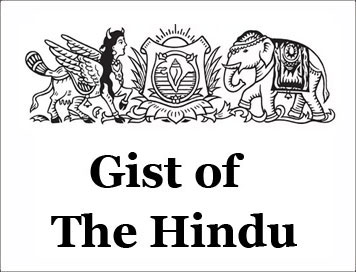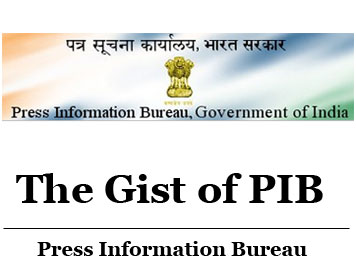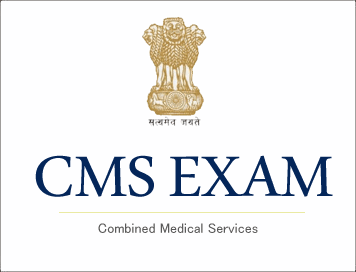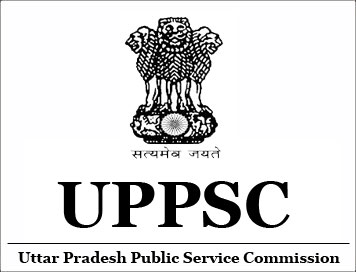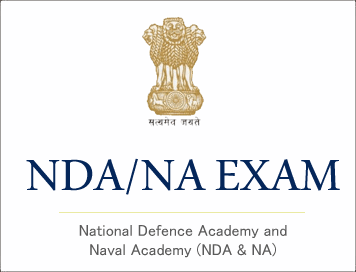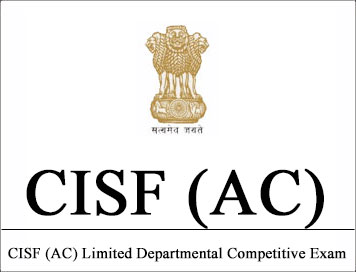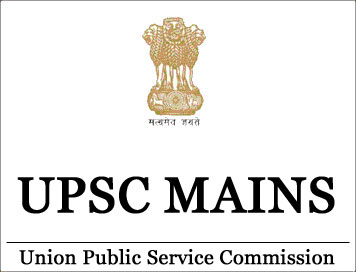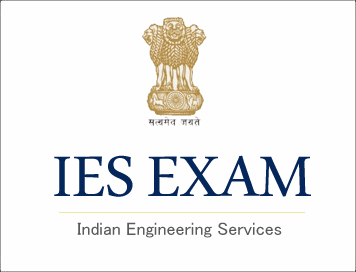
(Final Result) UPSC Engineering Services (Main) Exam-2024
Based on the results of the written part of the Engineering Services Examination, 2024 held by the UNION PUBLIC SERVICE COMMISSION in June, 2024 and the interviews for Personality Test in October-November, 2024, the following are the lists, in order of merit, of candidates who have been recommended for appointment to various Services/Posts in the Ministries/Departments concerned.
2. The number of candidates recommended for appointment under different disciplines are as under:
|
Discipline
|
Number of candidates recommended for appointment
|
|
Total
|
General
|
EWS
|
OBC
|
SC
|
ST
|
|
Civil Engineering
|
92
(including 04 PwBD-1 candidates)
|
29
|
10
|
31
|
15
|
07
|
|
Mechanical Engg.
|
18
|
05
|
02
|
06
|
03
|
02
|
|
Electrical Engg.
|
$26
(including 02 PwBD-1 candidates)
|
11
|
03
|
07
|
02
|
03
|
|
E & T Engineering
|
#70
(including 02 PwBD-1 & 01 PwBD-2 candidates)
|
26
|
07
|
15
|
14
|
08
|
|
Total
|
206 (including 08 PwBD-1 and 01 PwBD-2 candidates)
|
71
|
22
|
59
|
34
|
20
|
|
$ In Electrical Engineering, 01 PwBD-3 backlog vacancy has been interchanged with PwBD-1 due to non-availability of PwBD-3 candidate.
# In E&T Engineering, 01 PwBD-5 vacancy shall be carried forward to the next recruitment year as backlog vacancy.
|
3. Result of 04 candidates in E&T Engineering discipline has been withheld.
4. Appointments shall be made strictly in accordance with the extant rules and the number of vacancies available. Allotment of candidates to various Services/Posts shall be made according to ranks obtained and preference of Services expressed by them.
5. The number of vacancies reported by the Government for Group ‘A’/’B’ Services/Posts to be filled are as under:
|
Discipline
|
Vacancies
|
|
Total
|
General
|
EWS
|
OBC
|
SC
|
ST
|
|
Civil Engineering
|
113 (including 04 vacancies reserved for PwBD-1 candidates)
|
50
|
10
|
31
|
15
|
07
|
|
Mechanical Engg.
|
23
|
10
|
02
|
06
|
03
|
02
|
|
Electrical Engg.
|
29 (including 01 vacancy each reserved for 01 PwBD-1 & PwBD-3)
|
14
|
03
|
07
|
02
|
03
|
|
E & T Engineering
|
86 (including 02 vacancies reserved for PwBD-1, 01 for PwBD-2 & 01 for PwBD-5)
|
39
|
09
|
16
|
14
|
08
|
|
Total
|
251 (including 07 vacancies reserved for PwBD-1, 01 PwBD-2, 01 PwBD-3 and 01 PwBD-5)
|
113
|
24
|
60
|
34
|
20
|
6. The candidature of 43 recommended candidates with following Roll Numbers is provisional:
CIVIL ENGINEERING (17 Nos.)
|
0301147
|
0400077
|
0401255
|
0501086
|
0800903
|
|
0802169
|
0802266
|
0802861
|
0804808
|
0804889
|
|
0806041
|
1000614
|
1001182
|
1101849
|
1300070
|
|
2600641
|
2601435
|
-
|
-
|
-
|
MECHANICAL ENGINEERING (02 Nos.)
ELECTRICAL ENGINEERING (06 Nos.)
|
0601755
|
0809682
|
0810098
|
0810939
|
1005599
|
|
5400410
|
-
|
-
|
-
|
-
|
ELECTRONICS & TELECOMMUNICATION ENGINEERING (18 Nos.)
|
0303053
|
0504166
|
0811221
|
0811296
|
0811368
|
|
0811652
|
0812013
|
0812384
|
1006028
|
1006181
|
|
1006366
|
1301584
|
1504233
|
2401616
|
3501435
|
|
3501449
|
5000568
|
5101714
|
-
|
-
|
7. In accordance with Rule 13 (iv) & (v) of the Engineering Services Examination Rules 2024, the Commission is maintaining a consolidated Reserve List of candidates for each discipline as under:
|
Discipline
|
Number of candidates kept in Reserve List
|
|
General
|
EWS
|
OBC
|
SC
|
ST
|
Total
|
|
Civil Engineering
|
21
|
02
|
16
|
-
|
03
|
42
|
|
Mechanical Engineering
|
05
|
-
|
05
|
-
|
-
|
10
|
|
Electrical Engineering
|
03
|
01
|
01
|
01
|
-
|
06
|
|
Electronics & Telecommunication Engineering
|
12
|
-
|
11
|
01
|
-
|
24
|
|
Total
|
41
|
03
|
33
|
02
|
03
|
82
|
8. Union Public Service Commission has a ‘Facilitation Counter’ near Examination Hall Building in its campus. Candidates may obtain any information/clarification regarding their Examination/recruitments on working days between 10:00 A.M. and 05:00 P.M. in person or over Telephone Nos. 011-23385271 and 011-23381125 from this Counter. The result will also be available on the UPSC Website i.e. www.upsc.gov.in. The mark sheet shall be made available on the website within fifteen days from the date of declaration of result.
SERVICE : CIVIL ENGINEERING
|
S.NO.
1
|
ROLL NUMBER
0804488
|
NAME
ROHIT DHONDGE
|
|
2
|
0801397
|
HARSHIT PANDEY
|
|
3
|
0900271
|
LAXMIKANT
|
|
4
|
0301147
|
D MADHANKUMAR
|
|
5
|
2600161
|
AMAN PRATAP SINGH
|
|
6
|
0805587
|
SANCHIT GOEL
|
|
7
|
0802266
|
SUNIL SEERVI
|
|
8
|
0803137
|
ROHIT KUMAR
|
|
9
|
1100856
|
ANKIT MEENA
|
|
10
|
1001182
|
BADUGU RAJESH
|
|
11
|
0600980
|
KETAN KUMAR SINHA
|
|
12
|
0800848
|
BOLLA USHNEESH NANDAN
|
|
13
|
0400281
|
PUSHPENDRA KUMAR RATHORE
|
|
14
|
0805041
|
DHAWAL TAYAL
|
|
15
|
2601740
|
MOHAMMAD SHAQUIB
|
|
16
|
0802548
|
ANKIT ANAND
|
|
17
|
3500643
|
SHIVAM JINDAL
|
|
18
|
0802893
|
GADDIPATI YASWANTH BABU
|
|
19
|
0805817
|
AKASH TANWAR
|
|
20
|
4100406
|
KISHAN KUMAR
|
|
21
|
1101743
|
HEMLATA KUMAWAT
|
|
22
|
1501398
|
SHIVA VERMA
|
|
23
|
0400915
|
SHUBHAM GUPTA
|
|
24
|
0800008
|
SALAV JAIN
|
|
25
|
2600178
|
KISHAN KUMAR RAUNIYAR
|
|
26
|
0804808
|
DINESH KUMAR
|
|
27
|
4200005
|
SURAJ KUMAR
|
|
28
|
0804889
|
SIDDHARTH KUMAR SINGH
|
|
29
|
0801734
|
ASHISH KUMAR YADAV
|
|
30
|
0800174
|
ANKIT KUMAR TIWARI
|
|
31
|
0800029
|
ADITYA RAJ
|
|
32
|
0802409
|
HARSHIT YADAV
|
|
33
|
2600570
|
MANAS SINGH
|
|
34
|
2601931
|
ADARSH SINGH
|
|
35
|
1201030
|
NIKHIL SHRIVASTAVA
|
|
36
|
0802576
|
SOMRAJ MEENA
|
|
37
|
0700717
|
MRUTYUNJAY PATRA
|
|
38
|
0803876
|
SHIVAM SINGH
|
|
39
|
3500113
|
MAROOF ALI SHAH
|
|
40
|
1400237
|
SHUBHAM GOYAL
|
|
41
|
0805941
|
NITISH PATEL
|
|
42
|
2601664
|
TARUN PANDEY
|
|
43
|
4900698
|
SAJAL SHRIVASTAVA
|
|
44
|
0800792
|
MAYANK CHAUDHARY
|
|
45
|
1101482
|
MITBHASH SHARMA
|
|
46
|
1100137
|
MANOJ KUMAR MEENA
|
|
47
|
0805190
|
RAJAN KUMAR SHARMA
|
|
48
|
0802648
|
VIVEK KUMAR
|
|
49
|
1001133
|
DARAM THIRUPATHI REDDY
|
|
50
|
1500845
|
CHANDAN KUMAR
|
|
51
|
0806041
|
VISHNU PATEL
|
|
52
|
4100513
|
RITESH KUMAR GUPTA
|
|
53
|
4100868
|
SACHIN KUMAR
|
|
54
|
0803093
|
SUMIT MEENA
|
|
55
|
0800932
|
SIDDHANT KUMAR
|
|
56
|
2601654
|
NAVEEN YADAV
|
|
57
|
3600007
|
PRAKHAR SHRI
|
|
58
|
1100975
|
KHEM CHAND GURJAR
|
|
59
|
0802347
|
ASHUTOSH NANDAN KUMAR
|
|
60
|
0803739
|
ARJUN GUPTA
|
|
61
|
1100427
|
VIJAY KUMAR SAINI
|
|
62
|
2600641
|
DIVYANSH TRIPATHI
|
|
63
|
0803055
|
MOHAMMAD KASHIF OBAID
|
|
64
|
1500210
|
AMAR KUMAR
|
|
65
|
0803176
|
BALRAM PATIDAR
|
|
66
|
1100937
|
NEERAJ KUMAR SHARMA
|
|
67
|
0802861
|
UTKARSH SRIVASTAVA
|
|
68
|
1900799
|
SURE REVANTH KRISHNA
|
|
69
|
0800903
|
SURAJ KUMAR
|
|
70
|
0501086
|
SIDDIQUI SHAFIUDDIN SHAHABUDDIN
|
|
71
|
1000614
|
MANNENI RAKESH CHOWDARY
|
|
72
|
0802169
|
KUMAR ASHMIT
|
|
73
|
0100721
|
DEVRAJ SINGH MARKO
|
|
74
|
2601435
|
ABHISHEK BABOO
|
|
75
|
0804104
|
ANUJ KUMAR MEENA
|
|
76
|
1101849
|
SAGAR SINGH
|
|
77
|
0800448
|
DHARMENDRA SEJU
|
|
78
|
0500257
|
ABHIJEET SANJAY SHELKE
|
|
79
|
1300070
|
RAMTEKE SAMEER CHANDRASHEKHAR
|
|
80
|
4400054
|
HEIKHAM PRITAM SINGH
|
|
81
|
0801365
|
AKSHAAN SINGH PARMAR
|
|
82
|
0805410
|
MANU KUMAR
|
|
83
|
4100045
|
SURAJ PASWAN
|
|
84
|
1100552
|
KARTIK ALORIA
|
|
85
|
1101322
|
MOHIT BARUPAL
|
|
86
|
0804658
|
ABHINAV SINGH
|
|
87
|
0804702
|
ANUBHAV SINGH
|
|
88
|
0805262
|
ROHIT KUMAR
|
|
89
|
0401255
|
PIYUSH KUMAR SONI
|
|
90
|
0400077
|
SHIVANSH SHARMA
|
|
91
|
0802071
|
VIJAY SINGH
|
|
92
|
1300037
|
SRIKANTH SHARMA
|
SERVICE: MECHANICAL ENGINEERING
|
1
|
1300966
|
MUNISH KUMAR
|
|
2
|
0808064
|
RAJESH KASANIYA
|
|
3
|
1901233
|
GOLLANGI SATEESH
|
|
4
|
0501966
|
DAGDU AJINKYA RADHAKISAN
|
|
5
|
5101172
|
BANKURU NAVEEN
|
|
6
|
0807914
|
CHANDAN JOSHI
|
|
7
|
1901126
|
DINESH KUMAR SHARMA
|
|
8
|
0807831
|
SHAILENDRA SINGH
|
|
9
|
0402103
|
KRISHNA KUMAR DWIVEDI
|
|
10
|
3501148
|
VIDHATE AKSHAY SANTOSH
|
|
11
|
1003336
|
ANKIT KUMAR
|
|
12
|
0808112
|
PARMJEET
|
|
13
|
0601551
|
DHRUBA MITRA
|
|
14
|
2602670
|
VIVEK KUMAR
|
|
15
|
5000362
|
GAVI RAJU
|
|
16
|
1901288
|
J C RAHAN KUMAR DAS
|
|
17
|
1102196
|
RINKU RAM MEENA
|
|
18
|
0807455
|
DEEPESH JONWAL
|
SERVICE: ELECTRICAL ENGINEERING
|
1
|
0810275
|
RAJAN KUMAR
|
|
2
|
0101796
|
SATYAM CHANDRAKANT KHAIRNAR
|
|
3
|
1103106
|
PRIYANSHU MUDGAL
|
|
4
|
2100515
|
NAMAN AGARWAL
|
|
5
|
0810531
|
MAYANK KUMAR SINGH
|
|
6
|
1103563
|
RITVIK KOK
|
|
7
|
2603333
|
MANTHAN SHARMA
|
|
8
|
1102851
|
MAYANK JAIMAN
|
|
9
|
5400410
|
ANMOL SINGH
|
|
10
|
5400388
|
AKSHIT PARASHARI
|
|
11
|
0810790
|
PANKAJ SHARMA
|
|
12
|
1503996
|
ROSHAN BIHARI BAJPAI
|
|
13
|
0810939
|
VARUN DHANKHAR
|
|
14
|
0201753
|
DUMPA ACHYUTHA SAI RAM REDDY
|
|
15
|
0809682
|
VIKAS MISHRA
|
|
16
|
0809507
|
MANSI SINGH
|
|
17
|
0810242
|
VIVEK KUMAR
|
|
18
|
0810210
|
NIHAL SINGH
|
|
19
|
0810098
|
YASH
|
|
20
|
0601755
|
VISHAL KUMAR
|
|
21
|
0810829
|
JITENDRA KUMAR MEENA
|
|
22
|
1103217
|
GAUTAM SARIYALA
|
|
23
|
1004109
|
RAHUL MEENA
|
|
24
|
1102917
|
ABHISHEK MEENA
|
|
25
|
1005599
|
VALLEMONI VIJAY
|
|
26
|
1503862
|
SANDEEP SINGH
|
SERVICE:ELECTRONICS AND TELECOM ENGINEERING
|
1
|
2604472
|
HIMANSHU THAPLIYAL
|
|
2
|
0403218
|
YASHASVI VIJAYVARGIYA
|
|
3
|
0811868
|
UNNATI CHANSORIA
|
|
4
|
0503834
|
RAJIV RANJAN MISHRA
|
|
5
|
0811885
|
PARAG SAROHA
|
|
6
|
0403243
|
CHANDRIKA GADGIL
|
|
7
|
0602547
|
DEBARGHYA CHATTERJEE
|
|
8
|
2604408
|
VIDHU SHREE
|
|
9
|
0811368
|
THAKARE PIYUSH DAYANAND
|
|
10
|
0812078
|
RAJVARDHAN SHARMA
|
|
11
|
4101852
|
NIKHIL AGNIHOTRI
|
|
12
|
1202500
|
ABHISHEK KUMAR PANDEY
|
|
13
|
1504233
|
ABHASH KUMAR
|
|
14
|
0812013
|
ASHISH KUMAR
|
|
15
|
0812373
|
VIKASH KUMAR
|
|
16
|
1103715
|
SATYANARAYAN
|
|
17
|
0812695
|
MAHAVEER SINGH
|
|
18
|
0900640
|
HARSH MITTAL
|
|
19
|
0811652
|
KARTIK PAL
|
|
20
|
0811573
|
AKHIL
|
|
21
|
0202248
|
RAM PAL SINGH
|
|
22
|
1006435
|
V SUJAY
|
|
23
|
0811430
|
PRASHANT LAVANIA
|
|
24
|
0812384
|
SIDDHARTHA PATEL
|
|
25
|
0812173
|
AABHUSHAN
|
|
26
|
5000568
|
B T BALA VINAYAGAM
|
|
27
|
0403436
|
AVIRAJ
|
|
28
|
0403433
|
EGU DHEERAJ KUMAR
|
|
29
|
4101822
|
SHWETA GUPTA
|
|
30
|
0101905
|
BAGADE GIRISH RAVINDRA
|
|
31
|
1006028
|
CHAITHRA A M
|
|
32
|
1006567
|
NULU PRASANTH KUMAR
|
|
33
|
0504166
|
KHARAT SANTOSH TUKARAM
|
|
34
|
0602675
|
HARSH SINGH
|
|
35
|
0812292
|
TANYA TYAGI
|
|
36
|
1103828
|
PRAVEEN SHARMA
|
|
37
|
0812145
|
TANTRESHWAR KUMAR
|
|
38
|
1006625
|
NAMBI MRIDUPANI
|
|
39
|
1006123
|
ABHAYAM VERMA ARYA
|
|
40
|
2401616
|
CHANUMURU MALLIKARJUNA
|
|
41
|
0701582
|
ANMOL SHARMA
|
|
42
|
0812674
|
RAJEEV KUMAR
|
|
43
|
3501435
|
NANCY JASSAL
|
|
44
|
0811620
|
GOPESH SINGH
|
|
45
|
1006181
|
WAGHMARE SANDEEP
|
|
46
|
3501427
|
SHIVAM TIWARY
|
|
47
|
0302418
|
KESHAV JASROTIA
|
|
48
|
1301584
|
MILIND DATTU KAMBLE
|
|
49
|
0202365
|
CHINTU AGARWAL
|
|
50
|
0811101
|
NEETESH KUMAR MEENA
|
|
51
|
1103874
|
BHAVYA KALANI
|
|
52
|
0811221
|
KAPIL TOMER
|
|
53
|
0811768
|
HARI SINGH MEENA
|
|
54
|
1006366
|
MAKKE VENKATA KRISHNA
|
|
55
|
0812235
|
SOMYA SHARMA
|
|
56
|
0202379
|
KULDEEP MEENA
|
|
57
|
0811296
|
KRISHNA KUMAR
|
|
58
|
0812386
|
SANDEEP KUMAR
|
|
59
|
3501449
|
AMAN SANDHU
|
|
60
|
1103710
|
DEEPAK MEENA
|
|
61
|
0812744
|
CHANDER KANT
|
|
62
|
1103763
|
PUSHPENDRA JOULIYA
|
|
63
|
0811555
|
BHAVANA SHREERAM
|
|
64
|
1103839
|
ROHIT MEENA
|
|
65
|
5101714
|
PRAGATHI MOSUGANTI
|
|
66
|
0811516
|
VISHAL BIKUNIA
|
|
67
|
1103693
|
MANEESH NENIWAL
|
|
68
|
1103720
|
SHIVANI GHUNAWAT
|
|
69
|
0812398
|
RAM RATAN MEENA
|
|
70
|
0303053
|
NACHIKETH R GONDA
|



